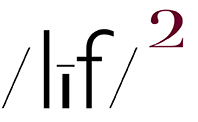all photos (embiggenable)
I HAVE PREVIOUSLY MENTIONED A VERMONT based gallery-PhotoPlace [GALLERY] (link)-that conducts, per their website, “monthly, juried photographic exhibitions to photographers worldwide, each with a new topic and internationally recognized juror”. Their current juried exhibition’s theme is The Poetry of the Ordinary; a theme that is right up my alley.
Over the years I have submitted photos for many of their monthly exhibitions and am pleased to report that on 12-15 occasions (I have not kept count) my work has been accepted for the gallery exhibitions. Considering that there are usually 3-4K worldwide submissions per exhibtion, that is a reasonable accomplishment. In any event, I will be submitting work for the current call for entries which states:
As photographers, we have developed skill in seeing beneath the surface of our subjects, and often find in them the beauty, poignancy, and poetry that exist in ordinary moments. For this exhibition, we seek the simple poetic elegance of the ordinary.
As I wrote, that statement seems to be right up my alley. However….depending upon the juror, he/she might have a very different understanding on the word “ordinary”. For instance, in the 3 example photos on call for entries page, is the spreader in the mist/fog ordinary, or, is the runner with the broom in the smoke(?) ordinary? ….
…..to my and sensibilities, I think not. Inasmuch as the runner himself and the spreader itself are rather ordinary, the circumstances in which they are pictured is seems to be very much out of the ordinary. Of course, what I think doesn’t matter but someone-the juror? the gallery director?-thinks otherwise. And that situation- a differing definitions of what constitutes the ordinary-makes me think my pictures of the ordinary might not be what fits the bill.
Then there is, for me, the idea of “seeing beneath the surface”-an adage / concept that has been bandied about the medium seemingly forever. And, it is a concept about which I am very uncertain, re: what the hell does that mean? I am fairly certain it does not mean that one should elevate / pick up one’s subject to see what’s underneath it. Nor do I believe that it implies that one is making pictures with an x-ray device.
Wise comments aside, the phrase when used as a proposition means: aspects of it-one’s nominal photographic subject-which are hidden or not obvious. That is a meaning which I can embrace-with caveats-cuz in my photographs I try to capture and express something about what I picture that is not obvious to the casual observer-the “hidden”, aka: unseen in situ, but can be made “obvious” in a photograph, aka: form.
The primary caveat I have about making a photograph that is about something hidden or not obvious is that, in my case, I am not photographing something, the referent, which I or most anyone would consider to be, in and of itself, beautiful, poignant, or poetic. Rather, my intent to is to make a object, i.e. a photograph, that, in and of itself, may be considered to beautiful, poignant, or poetic.
Consider the referent in the photos in this entry. No one I can think of believes that, as an example, my kitchen trash can, stove, and floor are beautiful, poignant, or poetic in and of themselves. However, I do believe-please forgive my self-aggrandizing opinion of my work-that the photograph thereof and the form it presents is a beautiful photograph, in and of itself. Or, at the very least, visually interesting. Of course, I am also comfortable with the fact that other viewers may not agree.
All of that written, I can only hope that the juror of the exhibition will agree that one of pictures fits the bill.
